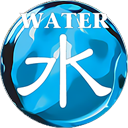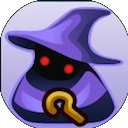Domain Format
You must be logged in if you wish to post to the forum.

Deck Building
Each Players deck must include:
-
1 Deck Master
-
60 card Main Deck (this count does not include the deck master)
-
Up to 15 card Extra Deck
-
All monsters in the Main and Extra Deck must be within the Deck Masters “Domain”
-
The maximum number of any card you can play is 1 (for example: you cannot play an additional copy of your deckmaster in the Main Deck or Extra Deck; you also cannot play both Polymerization and Fusion Substitute)
A domain is the range that determines which monsters can be played in your Main and Extra Deck. It is determined by all of the following items that are listed anywhere on the card except the monster card type box and the ATK/DEF field and not including the words “Effect”, “Flip”, “Ritual”, “XYZ”, “Synchro”, “Fusion”, “Link”, “Normal”, “Pendulum”, "Gemini", "Union", "Tuner" and “Spirit” that are not part of an archetype/card name or reminder text that does not state what the card itself is:
-
Archetypes: is a semi-official term that denotes a group of cards who share a name component, thereby allowing them to interact with card effects that specify cards with that name component.
-
Attributes
-
Monster Types
-
Specific Cards
-
Specific ATK AND DEF lines
-
"a monster with ATK and DEF" or "a monster with ATK / DEF".(Not to be confused with monsters that list (level/link/rank/scale)
-
This does not include reminder text, such as ATK/DEF stats in effects that create tokens.
Spells, Traps, and Divine Attribute Monsters are not restricted by a Deck Master’s Domain and may be played in any deck.
Domain Examples:



 "1500ATK/200DEF"
"1500ATK/200DEF"
Gameplay
Placement:
-
Placement will be determined randomly by a means accepted by all players in that game (such as die roll, coin flip, etc.)
-
Columns are defined by physical location and consist of the zones between you and the opponent sitting across from you
-
In a game beginning with an odd number of players, one person will not have an opponent facing them.
Turn Proceedings:
-
Each player begins the game by drawing 5 cards
-
If there are more than 2 players, the player going first will draw a card the first turn of the game.
The player going last in the first turn rotation gets the first battle phase of the game.
Player priority for activating effects begins with the turn player and proceeds in order of turn rotation.
When a player is removed from the game, all unresolved cards on the chain and cards they own will be removed from play. Any cards they own are no longer in the game, and any cards owned by other players will return to their opponents respective zone or sent to the grave if it is not possible. This action cannot be responded to. Cards that have already been resolved (IE:Eradicator Epidemic Virus) will still affect the player for its remaining turns. Effects tied to cards that must be on the field to activate or resolve (IE:Continuous spells/traps,etc) will cease.
Deck Master Mechanics
The Contract:
Is the agreement that a Player has with the monster they declare as their Deck Master; this contract states that:
-
The Deck Master allows the player to have access to summon/activate it from the Deck Master Zone (DMZ) as well as play any monsters within its Domain inside of your main and extra deck.
-
Deck Master Cards may only be summoned/activated from the Deck Master Zone using their appropriate mechanic (example: fusion, ritual, synchro, etc.) or non-activating summoning method.
-
For deck masters, this ignores any “must be special summoned from the hand or extra deck” clause on summoning conditions and effects that Ritual and Fusion summon.
-
Deck Masters do not have any effects in the Deck Master Zone (DMZ) outside of their non-activated summoning condition.
-
Don’t know how to tell if an effect activates/triggers?
-
If the effect activates, it will have a colon ( : ) or semicolon ( ; )
Extra Deck Pendulum Deck Masters cannot be activated from the Deck Master Zone. This is due to there being no mechanic containing a “from the extra deck clause” to ignore.
Activated/triggered effects that summon a card from the hand/deck/extra deck (Example:waking the dragon) cannot summon from the Deck Master Zone.
If a Deck Master would leave a zone type (field, grave, banish, deck, or hand), it will enter the zone to which it is intended to go, game state will check for any effects (such as trigger effects), the next priority sequence in which no player decides to activate a card/effect ends, the owner(s) of the Deck Master(s) must decide to either leave their Deck Master in its new zone or return/call it to the DMZ (this does not start a chain). If multiple Deck Masters have changed zones during the same priority sequence, the owners of those Deck Masters will make their decision to call their Deck Master to the DMZ in order of priority sequence.
-
Calling a Deck Master to the DMZ is not an effect and does not start a chain.
-
The player must pay a cumulative cost of 500 life points to summon/activate their Deck Master for each time it has returned to the Deck Master Zone (1st: 500 LP, 2nd: 1,000 LP, 3rd: 1500 LP, etc.); this is referred to as Cost to Summon (CTS).This does not start a chain.
Example:
-
Player 1: summons their Babycerasaurus (their Deck Master)
-
Player 2: activated Torrential Tribute
-
Player 1: may activate the effect of Babycerasaurus after the chain resolves.
-
If they choose not to activate the effect of Babycerasaurus, and no player takes an action that would start a new chain, then starting with player 1 each player whose deck master left the field may decide to call it back to the DMZ.
-
If they do, then a priority sequence will happen like normal until neither player decides to take an action that will build a new chain; starting with player 1 each player whose deck master left the field may decide to call it back to the DMZ and increase its CTS count by 1 (500 LP).
General Errata
(If you are unsure about a card, please refer to the card text database HERE)
Neither player” becomes “No player”
“Each player” or “both players” becomes “All players”
-
Except in the case of some unique resource management cards that manage resources.
-
Examples:
-
Dragged Down to the Grave
-
Creature Swap
-
Exchange
Activated/Triggered Effects:
Activated/Triggered card effects and effects that state “Your opponent” will either gain “Target Opponent;” or become “an opponent” or “That opponent/player” depending on the text of the card.
-
Examples:
-
Targets: Raigeki:
-
Original: Destroy all monsters your opponent controls.
-
Domain: Target Opponent: Destroy all monsters target player controls.
Does not target: Dangerous Machine Type-6
-
Original: During each of your Standby Phases: Roll a six-sided die and apply the result.
● 1: Discard 1 card.
● 2: Your opponent discards 1 card.
● 3: Draw 1 card.
● 4: Your opponent draws 1 card.
● 5: Destroy 1 monster your opponent controls.
● 6: Destroy this card.
-
Domain: During each of your Standby Phases: Roll a six-sided die and apply the result.
● 1: Discard 1 card.
● 2: Make an opponent discard 1 card.
● 3: Draw 1 card.
● 4: Make an opponent draw 1 card.
● 5: Destroy 1 monster your opponent controls.
● 6: Destroy this card.
-
Trigger: Mirror Force
-
Original: When an opponent's monster declares an attack: Destroy all your opponent's Attack Position monsters.
-
Domain: When an opponent's monster declares an attack: Destroy all Attack Position monsters that player controls.
Some trigger effects do not affect the player or their resources; these effects will either say that they affect the entire field (Example:Torrential Tribute) or state that they can target or affect any card(s) on the field (Examples: Doomking Balerdroch; Master Flare Hyperion). Cards in this category will contain one of these phrases: “all X on the field” or “any X on the field” (even your own).
Continuous effects and Conditions:
-
Apply to all players and those players and cards that meet the card's condition(s).
Continuous effect examples:
-
Skill drain affects all face up monsters on the field.
-
Destiny HERO Plasma affects all face up monsters your opponent(s) control.
-
Psychic End Punisher Will be unaffected by any activated effects of players who have a higher life total than its controller.
Condition Examples:
-
Borreload Dragon makes it so all opponents cannot respond to his effect.
Forbidden Cards
None
Forbidden Deck Masters
None
….yet

That's very wonderful. But let me ask, where can I collect those cards?